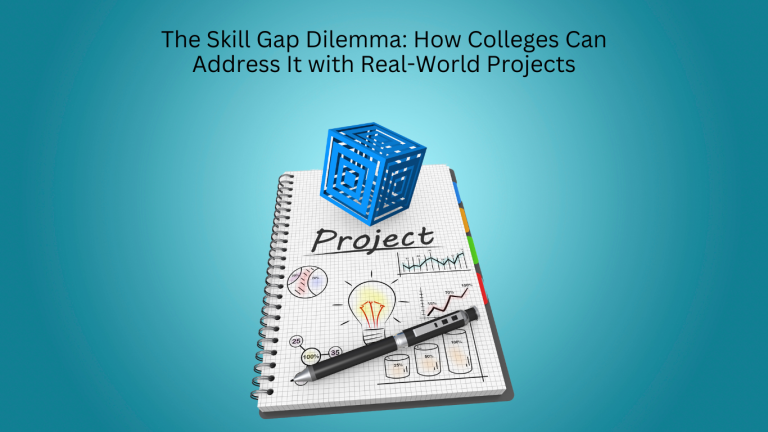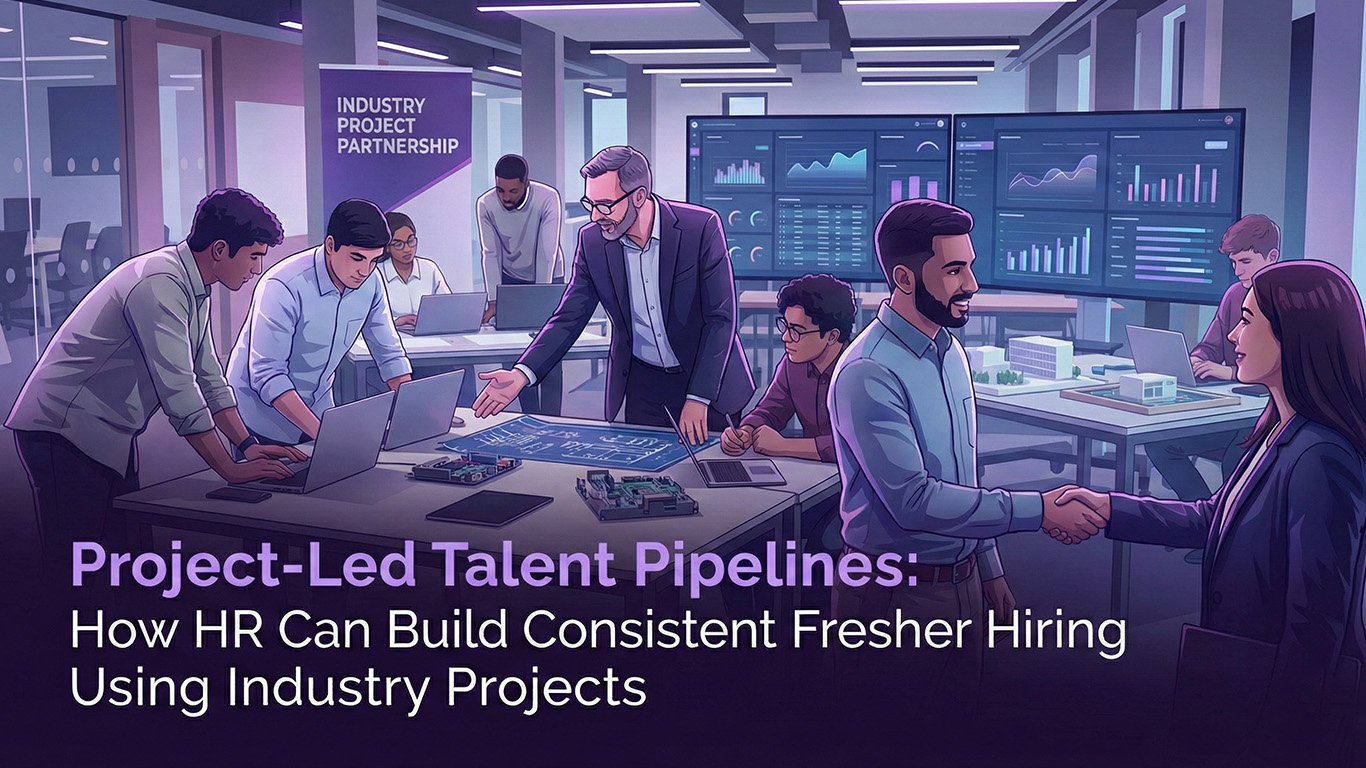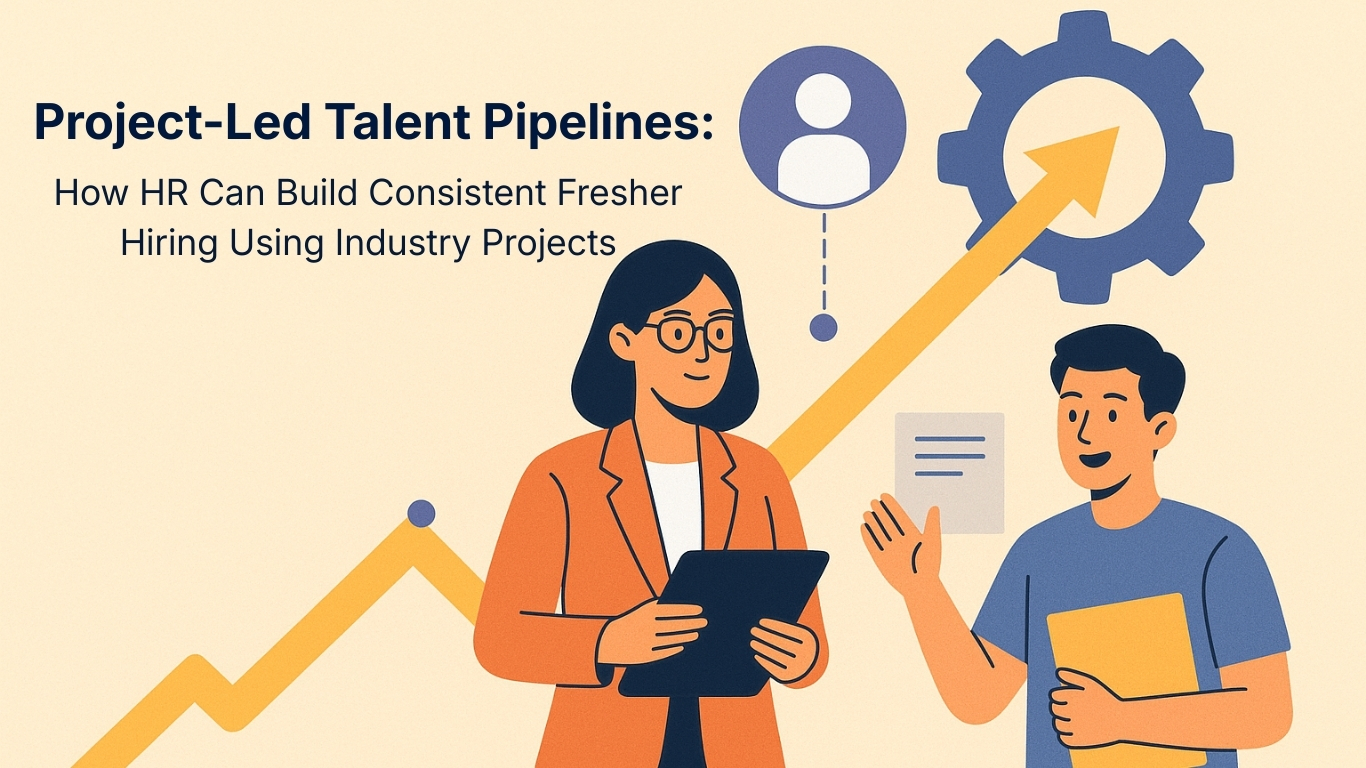Introduction
The skill gap is a major concern for colleges today. Despite holding degrees, many graduates lack practical skills needed in the job market. This widening skill gap impacts their employability. Employers are increasingly seeking candidates with real-world experience and problem-solving abilities. The traditional education system is struggling to keep up with the rapidly changing industry requirements. To bridge this skill gap, colleges must adopt real-world projects for practical learning.
Qollabb is at the forefront of this transformation, connecting colleges with industry-driven projects that enhance students’ practical skills. By embracing real-world projects, colleges can effectively address the skill gap and prepare students for successful careers.
Understanding the Skill Gap in Higher Education
The skill gap refers to the difference between the skills that employers expect and the skills that graduates actually possess. This gap is widening due to the rapid evolution of technology and industry demands. As per a report by NASSCOM, over 50% of Indian graduates are unemployable due to a lack of practical skills. The same trend is observed globally, impacting students’ job readiness.
One of the main reasons for the skill gap is the disconnect between theoretical knowledge and real-world applications. Students learn concepts in classrooms but struggle to apply them in professional settings. This gap affects their confidence and problem-solving abilities.
Colleges must recognize the need for experiential learning. Real-world projects can bridge this gap by enabling students to apply classroom knowledge in real-world scenarios. This approach not only enhances their practical skills but also prepares them for the dynamic job market.
Why Traditional Education Fails to Bridge the Skill Gap
Outdated Curriculum and Lack of Practical Exposure
Traditional education primarily focuses on theoretical knowledge. Outdated curriculums fail to cover emerging industry trends and technologies. As a result, students are not equipped with relevant skills. They lack exposure to real-world problem-solving and industry workflows, making them less competitive in the job market.
Many universities continue to rely on lectures and exams, which do not simulate real-world challenges. This leads to a gap between academic learning and industry requirements. Graduates find it difficult to adapt to workplace dynamics and expectations.
Insufficient Industry Collaboration
One of the significant reasons for the skill gap is the lack of collaboration between academia and industry. Colleges rarely involve industry professionals in curriculum design. As a result, students miss out on learning industry-relevant skills. They graduate without understanding the tools, technologies, and practices used in the industry.
By not collaborating with companies, colleges fail to provide students with real-world exposure. This disconnect affects employability rates and impacts the institution’s reputation.
Limited Opportunities for Experiential Learning
Experiential learning is essential for developing critical thinking and problem-solving skills. However, traditional education systems offer limited opportunities for hands-on experience. Assignments and exams do not replicate industry scenarios.
Students need exposure to industry tools, technologies, and best practices. They also require mentorship from professionals who can guide them in navigating workplace challenges. Without experiential learning, graduates struggle to apply theoretical knowledge in professional environments.
How Real-World Projects Bridge the Skill Gap
Practical Application of Theoretical Concepts
Real-world projects allow students to apply classroom knowledge to solve actual business problems. They learn how to analyze data, develop strategies, and implement solutions. This hands-on approach enhances their critical thinking and problem-solving skills.
Exposure to industry workflows, tools, and technologies prepares students for workplace expectations. It also boosts their confidence and adaptability. Real-world projects enable students to bridge the gap between theory and practice.
Skill Development Through Hands-On Experience
Working on live projects equips students with technical, analytical, and communication skills. They learn how to collaborate with teams, manage time, and lead projects. These skills are essential for career success.
Real-world challenges improve adaptability and resilience. Students learn how to navigate uncertainties, meet deadlines, and deliver results. This practical exposure makes them job-ready and enhances their employability.
Industry-Relevant Learning and Mentorship
Industry mentors provide guidance and feedback on real-world projects. They share insights on industry trends, practices, and expectations. This mentorship helps students align their skills with market demands.
Learning from professionals accelerates career growth. It also enhances networking opportunities, leading to better job placements. Mentorship bridges the gap between academia and industry, making students industry-ready.
The Benefits of Real-World Projects for Colleges and Students
Increased Employability and Job Readiness
Graduates with hands-on experience are preferred by recruiters. Real-world projects demonstrate practical skills on resumes, making candidates stand out. Students become job-ready with industry exposure and relevant experience.
Employers value candidates who have solved real-world challenges. They seek problem solvers who can contribute from day one. Real-world projects help students build a strong portfolio and improve their chances of getting hired.
Stronger College-Industry Relations
Collaborating with companies strengthens industry connections. Colleges become preferred talent hubs for recruiters. Long-term partnerships improve campus placements and student success.
Industry collaborations enhance curriculum relevance. Colleges can integrate emerging technologies and industry practices into the syllabus. This alignment boosts employability and prepares students for future job roles.
Enhanced College Reputation and Enrollment
Industry-aligned education enhances the institution’s brand value. Colleges known for real-world learning attract more student enrollments. Higher placement rates and success stories improve their reputation.
Colleges also achieve better NAAC and NIRF rankings with industry collaborations. They become recognized as leaders in skill-based education. This competitive edge increases student admissions and institutional growth.
How Qollabb Helps Colleges Address the Skill Gap
Connecting Colleges with Real-World Projects
Qollabb partners with top companies to provide industry-driven projects. Colleges get access to live projects relevant to current industry needs. Students gain practical exposure while solving real business challenges.
Qollabb bridges the gap between academia and industry by facilitating experiential learning. It connects students with companies looking for innovative solutions. This collaboration enhances students’ problem-solving and analytical skills.
Facilitating Industry Mentorship and Career Guidance
Qollabb connects students with industry experts for mentorship. Students receive feedback, guidance, and career advice from professionals. Mentorship programs enhance job readiness and skill development.
Industry mentors help students understand market trends and career paths. They provide valuable insights into workplace dynamics and expectations. Mentorship accelerates career growth and improves employability.
Customized Learning Pathways and Certifications
Qollabb offers skill-based learning modules tailored to industry demands. Students earn certifications that enhance their employability. Colleges can design industry-integrated curricula with Qollabb’s support.
Certifications validate students’ practical skills and knowledge. They help graduates stand out in job applications and interviews. Customized learning pathways ensure that students acquire relevant skills.
Conclusion
The skill gap dilemma is a significant challenge for higher education. Traditional education alone is insufficient to prepare students for today’s job market. Real-world projects are essential for bridging the skill gap and enhancing employability.
Qollabb connects colleges with industry projects, mentors, and skill-based learning. It enables students to gain practical exposure, develop critical skills, and become job-ready. By embracing real-world learning, colleges can prepare students for successful careers.
Colleges should partner with Qollabb to provide practical learning experiences and bridge the skill gap effectively.





